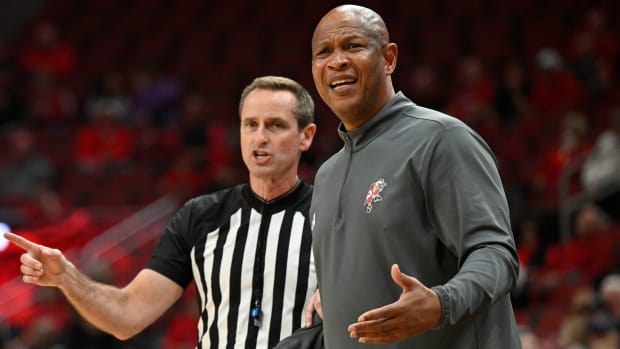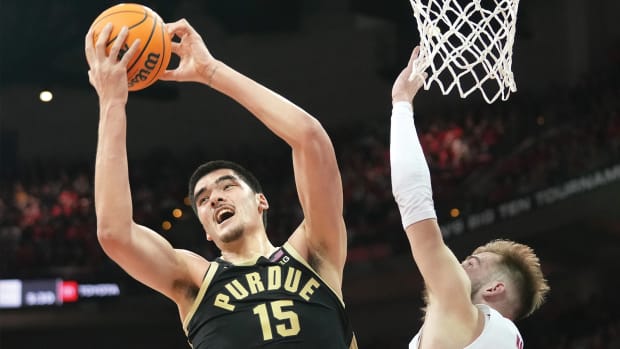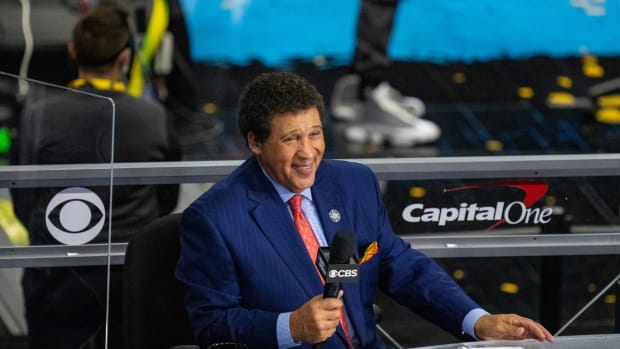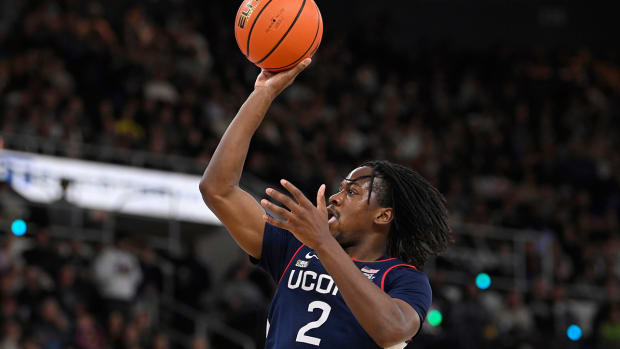Key Questions, Takeaways From the NCAA’s NIL Announcement
In a significant, but cautiously worded, announcement on Tuesday, the NCAA’s Board of Governors informed the public that it has unanimously voted to permit college athletes “the opportunity to benefit from the use of their name, image and likeness.”
A Major Change—in Theory
At first glance, the announcement signals a momentous turning point in collegiate sports.
The NCAA has long denied college athletes the opportunity to gain from the commercial use of their identity rights. This is true in contracts related to intellectual property in video games as well as in camp sponsorships and merchandise and apparel dealings.
The NCAA has premised this ban on its system of “amateurism.” Amateurism captures the NCAA’s overarching desire to clearly distinguish college athletes from professional athletes and, in what some view as a peculiar from of protection, “protect” college athletes from a sports business world that the NCAA often paints as rife with unethical agents and deceptive businesses. Critics charge the NCAA has manipulated amateurism to create a repressive system where college sports are professional for almost everyone—the well-paid coaches, staff, trainers, alumni officers, broadcast companies, apparel makers, stadium and arena construction companies, clothing makers, sneaker conglomerates and numerous other persons and entities that profit handsomely from the playing and broadcasting of college sports. The group missing from that list? The players.
A few years ago, former UCLA basketball star Ed O’Bannon proved that the NCAA’s ban on athletes profiting from the use of their names, images and likenesses violated federal antitrust law. O’Bannon established that NCAA rules denying players compensation constituted an anti-competitive and unlawful agreement among competing colleges to set the value of players’ identity rights at $0.
Yet the effect of that ban has lingered in the years followed. This is because the U.S. Court of Appeals for the Ninth Circuit ruled that the NCAA can comply with the O’Bannon ruling so long as the NCAA allows member schools the chance to offer college athletes the full cost of attendance (an amount that varies by school but is generally worth several thousands of dollars per year).
Conceptually, Tuesday’s announcement indicates that the NCAA is walking away from its longtime ban on players enjoying the fruits of their names, images and likenesses. When played out to its logical conclusion, the NCAA’s new position will enable college athletes to sign endorsement deals, negotiate to have avatars of their identities published in video games (so, yes, a return to college sports video games), contract to sponsor camps, be paid to sign autographs, and get a check to have their last names appear on replica jerseys.
To be clear, college players profiting from the use of their names, images and likenesses does not mean colleges pay them. It instead means these players can negotiate deals with businesses—video game publishers, camps, trading card shows, clothing makers, sneaker companies and other entities that know those players’ identities are commercially valuable.
For college players whose peak marketability is while they are in college, the ability to negotiate their NIL rights could prove very significant. While some college stars will go on to the NFL or NBA, most won’t and many others play in sports where there is an absence of pro leagues.
So, at last, it appears that multi-year court cases and pressure by legislators have forced the NCAA to change or, as its critics like to say, evolve.
The Specifics Might Tell Another Story
Often in life, the devil is in the details. Fine print that we tend to initially gloss over out of exuberance sometimes later on causes great disappointment and aggravation.
With that life lesson in mind, the NCAA’s announcement is devoid of any policies or procedures that clarify what the announcement actually means.
The NCAA’s announcement follows a recommendation by the NCAA Board of Governors’ “Federal and State Legislation Working Group.” Since May, this group has been charged with studying “issues highlighted in recently proposed federal and state legislation related to student-athlete name, image and likeness.” The 19-member group has been led by Big East commissioner Val Ackerman and Ohio State athletic director Gene Smith; university presidents, conference commissioners and three college athletes are also members. The group has also sought advice and counsel from various persons in the college sports industry.
Tuesday’s announcement indicates that from now until April 2020, the working group will “gather feedback” as well as study changes in the state and federal legislative environment. Also, the NCAA has tasked Division I, Division II and Division III sports to create any new rules on NILs by no later than January 2021.
In other words, the time horizon for any meaningful change is likely a couple of years away.
When that change comes, it might prove more superficial than transformative—and as explained below, could lead to a legal fight between the NCAA and both state and federal laws that compel the NCAA to do more than it is willing to do.
To that point, the NCAA’s announcement stresses that this forthcoming “opportunity” for college athletes must nonetheless be “consistent with the collegiate model.” That ambiguous qualification could foretell major limitations. Notice the use of the word “opportunity.” An opportunity suggests its leaders view players negotiating the use of their names, images and likeness as a privilege rather than a right. Words matter.
The announcement also conspicuously emphasizes that any “modernization” of rules for NIL rights must be adopted in accordance with NCAA principles. Such language might mean the eventual NCAA rules dramatically limit the scope of changes.
For instance, the new rules must “maintain the priorities of education and the collegiate experience” and “make clear the distinction between collegiate and professional opportunities.” In addition, any compensation for NIL rights must clearly not constitute compensation for athletics performance or participation. Further, the new rules must clearly define college athletes as not employees. Also, NIL rights cannot interfere with the recruiting environment, nor can NIL payments be made to induce athletes to pick a particular college, remain at that college in lieu of transferring or transfer to another school.
My 10 Questions
Given the haziness of the NCAA’s announcement, it’s difficult to know how NIL rights will be handled. Here are 10 practical questions:
1) Will college athletes be able to be paid for their NIL rights? The NCAA statement references athletes receiving a “benefit,” a word that might imply pay, but could alternatively mean a far more restrictive form of compensation—such as a debit account that athletes can use only for academic-related purposes (think of a gift card that only works in certain places, such as the book store or campus dining).
2) Will college athletes receive NIL “benefits” while in college or will any compensation be accessible only after their collegiate experience ends? In her ruling in the O’Bannon decision, U.S. District Judge Claudia Wilken held that schools would be obligated to pay men’s basketball and football players up to $5,000 per year while they are in school for the use of their NIL rights. Transmission of such payment would have occurred after the players graduated. This stipulation was later vacated in the Ninth Circuit’s ruling, but is the kind of system Judge Wilken articulated what the NCAA might have in mind?
3) Will college athletes be able to hire agents to help them negotiate NIL deals? The NCAA’s statement doesn’t reference that topic. If a player can’t hire an agent, he or she would lose out on the opportunity to secure expert advice. An agent could also assure the athlete that any accumulation of NIL monies is accurately accounted for.
4) Will college athletes be allowed to join a trade association to help them negotiate NIL deals? A trade association would allow them to bargain with more leverage as a group than as an individual (and a trade association is something the NFLPA would like to see happen)? The NCAA’s statement doesn’t reference that topic. If college athletes could only negotiate as individuals, some—particularly lesser known players—would likely lose out on NIL opportunities.
5) Can a college’s compliance staff reject a player’s proposed endorsement deal or other proposed NIL contract? The NCAA seems inclined to ensure that colleges—not the athletes—ultimately control the extent to which athletes negotiate the use of their NIL rights. Michael Drake, who is chair of the NCAA board and president of Ohio State University, recently stressed that any NIL rule changes can’t morph college sports into professional sports. That sentiment likely won’t be lost on Gene Smith, the working group’s co-chair whose boss at Ohio State is Drake.
6) Can a college’s rejection of a player’s proposed deal happen for any reason, or only if a proposed deal would conflict with a sponsor of the university? Imagine a college athlete wants to sign with New Balance, but her school already has a deal with Adidas. Or imagine a player wants to sign a deal with a company that the school finds “inappropriate” for some reason or another. There are so many possibilities. Different rules would lead to different answers.
7) How will schools determine whether a player’s proposed NIL deal might in reality constitute compensation for him or her to play at a particular school? Imagine a local car dealership is owned by an influential alumnus and booster of a popular state university. Now imagine that alumnus pays a top recruit a substantial amount of money—say $500,000—in a purported endorsement deal. As luck would have it, the recruit picks the alma mater of the alumnus. The alumnus then insists the money is for an endorsement deal and consistent with the NCAA’s NIL policy, but the NCAA is skeptical, especially since the payment seems very overpriced. What happens next?
8) Based on the preceding question, if NIL rights are used in deceptive ways to compensate players for what amounts to a decision to pick a school, could Title IX issues surface? Title IX is a complicated law, but in general requires that schools provide gender equity in athletic opportunities for their athletes. Legitimate contracts between athletes and private businesses for the commercial use of name, image and likeness should not run afoul of Title IX. Those negotiations do not involve the college—they involve the athlete and a third party. However, if such contracts are in reality designed for recruiting purposes of football players and men’s basketball players, and if a school becomes aware of that practice or should become aware, there may be a problematic intersection for that school with Title IX.
9) What happens to NIL rights if a state declares that its public university athletes are employees? Is that more likely to happen if college athletes are paid for their NIL rights? Much has been written that football players at Northwestern University failed in 2015 to gain employee status in their petition to the National Labor Relations Board. That is true but the conclusion presents a very incomplete picture of whether college athletes ought to be considered employees. Specifically, while Northwestern players invoked the National Labor Relations Act (NLRA) since they were enrolled at a private school, the NLRA only governs private employers. College athletes at state public universities could use applicable state labor laws to claim they are employees. In certain states, particularly those that are progressive, it’s possible players could succeed in proving that they are employees. The accompanying impact on NIL rights would be fascinating and further complicate the legal landscape of college sports.
10) How might receipt of NIL rights impact a foreign players’ immigration status? Some college athletes are foreign students who are typically enrolled on F-1 visas. These visas limit the number of hours a student on such a visa can work to 20 hours, which happens to match NCAA rules that limit college athletes to 20 hours per week for playing and practicing. To the extent college athletes are considered employees or to the extent their involvement in negotiation of NIL rights leads to reconsideration of their visa status, there could be immigration law complications.
Again, the devil is in the details, particularly in a topic as complicated as this one. A headline that screams revolution might be accompanied by a story that is far more milquetoast. Since the story hasn’t been written by the NCAA, it remains to be seen how well the headline and story match.
The Legislative Band Plays on
In the meantime, don’t expect states legislators and members of Congress to refrain from pursuing legislative reforms related to college players’ NIL rights. They will likely be skeptical of the NCAA until the NCAA gives them specific reasons to feel differently.
California has adopted the Fair Pay to Play Act, which goes into effect in 2023 and which will make it illegal for California colleges to deny their athletes the chance to hire agents or gain compensation for the use of their NIL rights. Legislators in such states as Florida, Illinois, New York, South Carolina, Nevada, Pennsylvania, Colorado, Kentucky and Minnesota have proposed, or plan to propose, similar bills. These states won’t wait for the NCAA to clarify its position on NIL rights. Likewise, members of Congress who have introduced or plan to introduce federal legislation related to NIL rights aren’t going to wait around for the NCAA.
In that same vein, the prospect of a protracted legal fight over NIL rights continues. The NCAA is poised to challenge state laws that envision a system for NIL rights different from the one ultimately articulated by the NCAA. More specifically, the NCAA will argue that such state laws violate the U.S. Constitution’s Commerce Clause. This area of the Constitution has been interpreted to forbid states from enacting laws that unduly impact commerce in other states. In the 1993 case NCAA v. Miller, the NCAA used the Commerce Clause to successfully defeat the State of Nevada guaranteeing new procedural rights for college athletes and coaches whom the NCAA claimed had engaged in wrongdoing. The NCAA persuaded the courts that it can’t operate as a national entity if states adopt conflicting laws. The vulnerability of state laws is one reason why a federal approach to NIL right might make more sense than a state-by-state approach.
Those who hoped that the NCAA’s announcement on Tuesday would resolve the subject of NIL rights are bound to be disappointed by the uncertainty detailed above. The NIL rights game in college sports is still in the first half, let alone down-to-the-wire.
Michael McCann is SI’s Legal Analyst. He is also an attorney and Director of the Sports and Entertainment Law Institute at the University of New Hampshire Franklin Pierce School of Law.





